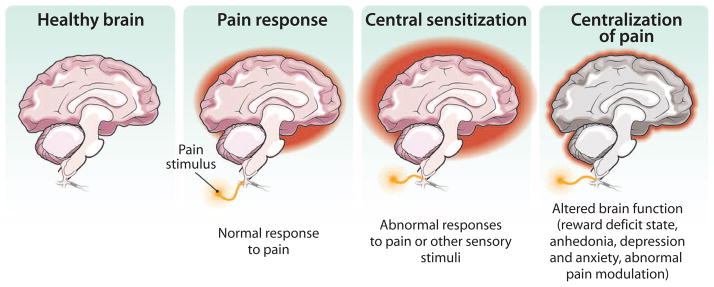Fig. 2. Chronic pain affects the brain.

Damage to peripheral nerves (or to the CNS) can produce pain that is associated with ongoing plasticity of the brain. Such plasticity can reflect increased “centralization” of pain within specific (for example, emotional) circuits. Centralization of pain includes changes that are often associated with pain such as altered cognition and affect (depression or anxiety). Understanding the processes promoting such chronification of pain is critical for successful translation of pain therapies.
